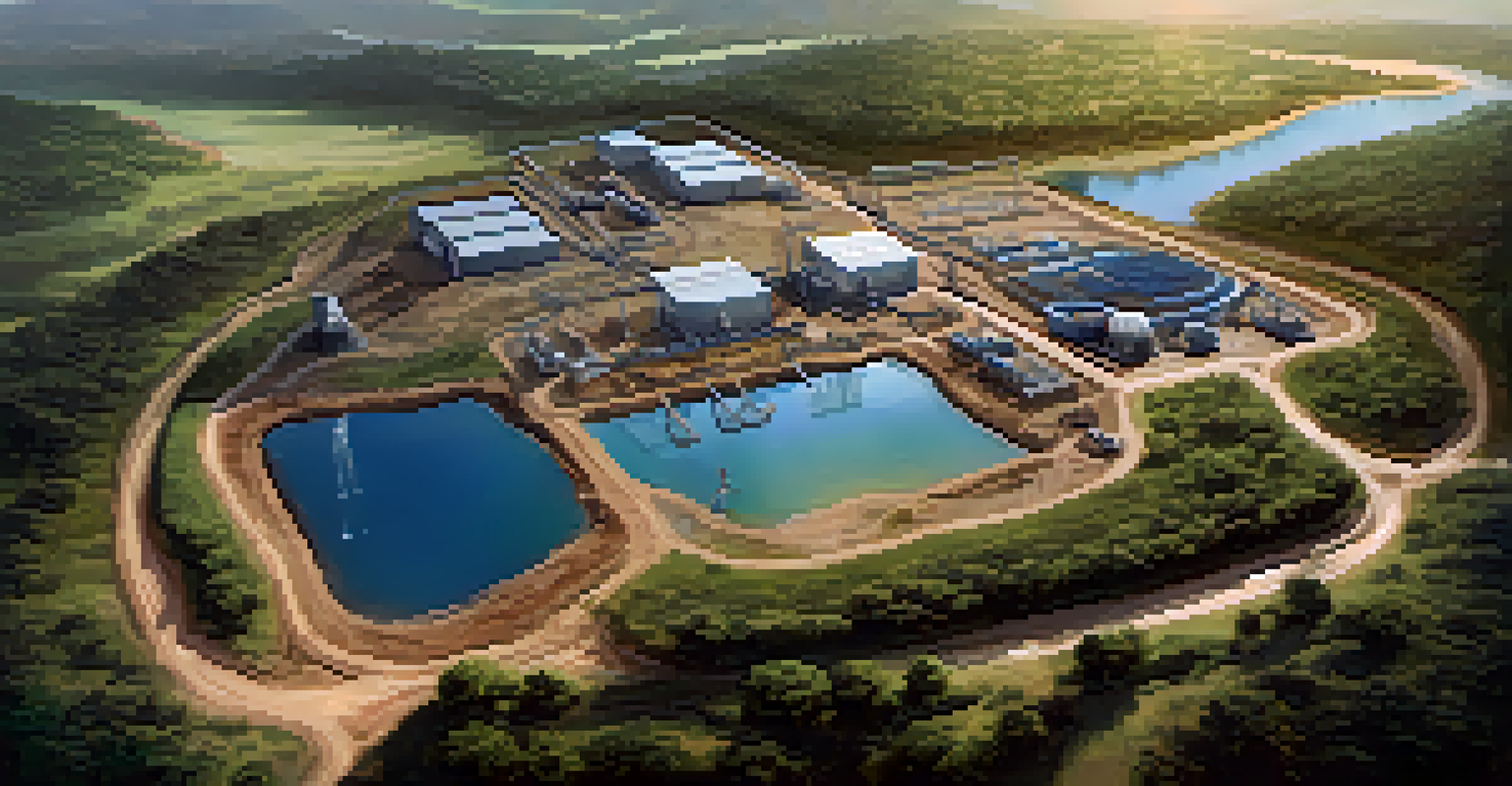Sustainable Mining Practices: Technologies for Environmental Protection

Understanding Sustainable Mining: What Is It?
Sustainable mining refers to the extraction of minerals in a way that minimizes environmental impact and supports local communities. This approach balances the need for resource extraction with the imperative to protect the planet. It’s about ensuring that mining activities contribute positively to the economy while preserving natural resources for future generations.
The earth does not belong to us: we belong to the earth.
For instance, sustainable mining practices often involve careful planning and management of resources to reduce waste and pollution. This could mean using advanced techniques to minimize land disruption or employing methods that lower water usage during the mining process. The goal is to create a system where mining can coexist harmoniously with nature.
Moreover, sustainable mining also encompasses social responsibility. Companies are increasingly required to engage with local communities, providing job opportunities and investing in local infrastructure. This holistic view of mining combines environmental stewardship with economic development, fostering a more sustainable future.
The Role of Technology in Sustainable Mining
Modern technology plays a pivotal role in promoting sustainable mining practices. Innovations such as automation and data analytics help companies monitor and manage their operations more effectively. By leveraging these tools, mining companies can optimize resource extraction while minimizing waste and environmental damage.

For example, drones are now used to survey mining sites, providing real-time data that can inform better decision-making regarding land use and resource allocation. This not only improves efficiency but also reduces the need for extensive manual labor, which can be disruptive to the environment. Technologies like these are reshaping the mining landscape, making it more efficient and less harmful.
Sustainable Mining Balances Needs
Sustainable mining minimizes environmental impact while supporting local communities and economies.
Furthermore, advancements in recycling technologies allow mining companies to recover valuable materials from waste, reducing the need for new mining operations. This circular approach not only conserves resources but also lessens the environmental footprint of mining activities.
Water Management Technologies for Mining
Water is a critical resource in mining, but it can also be a source of significant environmental impact. Sustainable mining practices focus on minimizing water usage and preventing contamination of local water sources. Technologies that enable efficient water management are essential in this regard.
Sustainability is not a destination, but a journey.
For instance, closed-loop water systems recycle water, reducing the amount needed for mining operations. This not only conserves water but also lessens the risk of pollutants entering nearby rivers and lakes. Implementing these systems is a practical step toward a more sustainable mining approach.
Additionally, the use of advanced filtration and treatment technologies allows mining companies to clean and reuse water that has been in contact with minerals. This not only protects local ecosystems but also ensures compliance with environmental regulations, making mining operations more responsible and sustainable.
Reducing Carbon Footprint with Renewable Energy
One of the most pressing challenges in mining is its carbon footprint. Traditional mining operations often rely on fossil fuels, which contribute to greenhouse gas emissions. However, the integration of renewable energy sources is a game-changer for sustainable mining practices.
Many mining companies are now investing in solar and wind energy to power their operations. For example, some mines have successfully implemented solar panels to provide clean energy, drastically reducing their reliance on diesel generators. This shift not only helps the environment but can also lead to significant cost savings over time.
Technology Enhances Mining Efficiency
Modern technologies like drones and recycling methods optimize resource extraction and reduce waste.
Moreover, by utilizing renewable energy, mining companies can enhance their reputation as environmentally responsible entities. This not only attracts investors but also resonates with consumers who are increasingly conscious of sustainability issues, creating a win-win situation for both the industry and the planet.
Biodiversity Conservation in Mining Areas
Mining often poses risks to local biodiversity, but sustainable practices aim to mitigate these effects. Companies are now taking steps to protect and restore ecosystems affected by mining activities. This involves careful planning and execution of mining operations to minimize habitat destruction.
For instance, some companies conduct environmental impact assessments before starting a new project. These assessments help identify sensitive areas that need protection, allowing companies to adjust their operations accordingly. This proactive approach not only benefits the environment but also helps maintain the balance of local ecosystems.
Additionally, many mining companies are investing in rehabilitation projects after mining activities conclude. This could involve replanting native vegetation or creating wildlife corridors to support local fauna. Such initiatives are essential for preserving biodiversity and demonstrating a commitment to environmental stewardship.
Community Engagement and Social Responsibility
Sustainable mining goes beyond environmental concerns; it also emphasizes the importance of community engagement. Mining companies are increasingly recognizing that their operations can have significant social impacts on local communities. Engaging with these communities is vital for building trust and ensuring mutual benefits.
For example, many companies now involve local stakeholders in decision-making processes related to mining projects. This includes discussions around land use, water management, and job creation. By prioritizing community input, companies can better align their operations with local needs and concerns, fostering a sense of ownership and partnership.
Community Engagement is Essential
Engaging with local communities helps mining companies build trust and ensure mutual benefits from their operations.
Moreover, sustainable mining practices often include investment in community development initiatives. This could range from funding education and healthcare programs to creating job training opportunities. By contributing to the overall well-being of communities, mining companies can enhance their social license to operate and promote sustainable development.
The Future of Sustainable Mining Practices
The future of mining hinges on the adoption of sustainable practices and technologies. As environmental regulations tighten and public awareness grows, the industry must evolve to meet these challenges head-on. Embracing sustainability is not just a trend; it’s becoming a necessity for long-term viability.
Emerging technologies such as artificial intelligence and machine learning are set to play a significant role in optimizing mining operations. These innovations can analyze vast amounts of data to improve resource extraction efficiency while minimizing environmental impact. The integration of such technologies will likely define the next generation of sustainable mining practices.

Ultimately, the shift toward sustainable mining requires collaboration across the industry, governments, and communities. By working together, stakeholders can create a framework that prioritizes environmental protection while still meeting the demand for essential resources. The road ahead is challenging, but the potential for a more sustainable mining future is within reach.